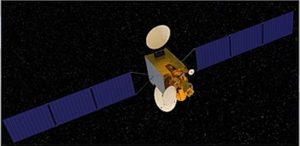
China continues to move forward in its ongoing use of regional space and satellite deals to access the natural resources of other countries.
As reported last week in The Sydney Morning Herald, China is amassing space-related contracts with countries in Central and South America, regions which have often lagged in space-related activity. Venezuela launched its third satellite from Chinese soil in October, and Bolivia is expected to get a second communications satellite from China by 2022.
Bolivia, with its rare earths and mineral deposits, is a prime example of China’s prowess in using satellite deals to obtain resources it covets for tis own purposes.
It is worth noting that there is benefit for Bolivia, too. Satellite communications technology makes good sense for this mountainous, landlocked nation of 10.9 million people, according to Lluc Palerm, a senior analyst at space industry consultancy Northern Sky Research. “Unlike fibre or other ground alternatives, which would involve very large investments, satellites can connect remote places very quickly with fairly cheap terminals. That’s critical to bring communities online for remote education, eHealth and disaster response,” Palerm told Fairfax Media.
China’s know-how, launch facilities, and established hunger for Latin American raw materials makes a space programme possible for Bolivia, despite internal issues including poverty and lack of infrastructure. The first Bolivian satellite, launched from China in 2013, was named Túpac Katari 1 after a Bolivian revolutionary. The Bolivian Space Agency (Agencia Boliviana Espacial, or ABE), said the satellite cost U.S.$302 million, which was 85% financed via a loan from the Development Bank of China. Understandably, the Bolivian media have questioned how long it might take for repayment from one of South America’s poorest countries.
“I think Tupac Katari I was less of a gamble for China and more of another way to strengthen ties with the Evo Morales administration in the landlocked country,” said W. Alejandro Sanchez, a geopolitics and defence analyst and Latin America specialist.
In fact, China is Bolivia’s second largest trading partner, Sanchez said, with approximately 60 Chinese companies in operation there, some of which have built over 1300 kilometres of roads across the country.
But their interest is more than infrastructure. Just this month, Liang Yu, China’s Ambassador to Bolivia, was clear about China’s interest in Bolivia’s lithium resources.
“China is the country with the largest number of vehicles in the world and, therefore, it will be the largest market for the use of lithium batteries. One of the four consortia that presented their technical and economic proposals for the assembly and commissioning of the plant to industrialise lithium is Chinese,” he told Bolivian newspaper La Raison.
Bolivia may just be the tip of the iceberg. A February 2018 report from NSR found that the Chinese satellite industry was primed to take a larger share of the global satellite communications market, “through attractive one-stop-shop offerings, aggressive growth plans and enhanced exports.”
And, according to Sanchez, there may be another benefit for China to expand its role in this market. Currently, he explained, many of the countries which maintain diplomatic ties with Taiwan (the Republic of China) are in Central America and the Caribbean. “Last year, Panama switched recognition from Taiwan to Beijing, and it is likely that other countries will follow this year as Beijing ‘purchases’ recognition via investments, financial aid and trade agreements,” Sanchez said.


